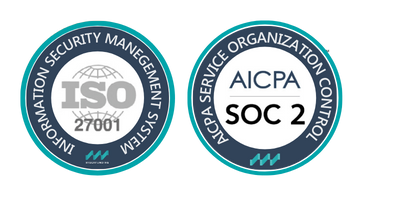The landscape of bank risk management is constantly evolving, shaped by a myriad of factors including regulatory changes, technological advancements and shifting customer expectations. While predicting the future with certainty is challenging, we can identify several key trends that will undoubtedly transform risk functions over the next decade. Drawing from insights gathered from McKinsey Working Papers on Risk, we uncover the structural shifts driving change in the banking sector and examine the implications for risk functions worldwide.
These trends offer valuable insights into the future of bank risk management and provide a roadmap for navigating the complexities of the financial industry.
Trend 1: Continued expansion of regulation
Regulatory frameworks governing the banking sector will continue to expand, driven by several factors. Increased scrutiny following the global financial crisis has led to tighter regulations aimed at safeguarding against bank failures and unethical behavior. Governments are also demanding greater compliance with regulatory standards on both domestic and global scales, with laws applied extraterritorially to ensure “good banking” practices worldwide. Additionally, regulations addressing customer treatment and conduct are expected to tighten significantly, reflecting evolving societal expectations.
Trend 2: Changing customer expectations
The rise of technology and changing demographics will significantly alter customer expectations in banking. As technology becomes ubiquitous, customers will demand intuitive, personalised experiences accessible across multiple devices. Fintech innovations are challenging traditional banking models, offering seamless solutions and disrupting customer relationships. To compete effectively, banks must prioritise digitisation and customer-centric approaches, with risk functions playing a pivotal role in redesigning processes and ensuring compliance.
Trend 3: Technology and analytics as risk muscle
Advancements in technology and analytics present new opportunities for risk management. Big data offers insights into customer behavior and risk patterns, while machine learning enhances predictive modeling capabilities. Crowdsourcing enables banks to harness collective intelligence for better decision-making. Embracing these technologies can reduce risk costs and improve decision accuracy, positioning banks for competitive advantage in a rapidly evolving landscape.
Trend 4: Emergence of additional risk types
Beyond financial risks, banks face growing challenges from nonfinancial risks such as operational failures, cyberattacks, and contagion risks. These risks demand new capabilities and processes for effective management and mitigation. Understanding interconnectedness and adopting proactive measures are essential for navigating these emerging risks and safeguarding against potential disruptions.
Trend 5: Elimination of biases for better risk decisions
Unrecognised biases pose a significant risk to decision-making processes within banks. Addressing biases requires a comprehensive approach, including bias recognition, elimination techniques, and organisational measures. Risk functions can lead the way in implementing de-biasing strategies, fostering a culture of fact-based decision-making and enhancing overall risk management effectiveness.
Trend 6: Need for strong cost savings
Persistent margin pressures and regulatory requirements necessitate a focus on cost savings and operational efficiency. Simplification, standardisation, and digitisation offer avenues for substantial cost reductions, but require strategic investments and organisational restructuring. Risk functions must balance cost-saving initiatives with the need for technological innovation and regulatory compliance, charting a path toward sustainable growth and profitability.
The future of bank risk management will be shaped by a dynamic interplay of regulatory, technological, and market forces. By embracing these trends and proactively addressing challenges, banks can adapt to a rapidly changing landscape, drive innovation, and deliver value to customers in an increasingly digital and interconnected world.
Many risk teams are grappling with legacy systems that struggle to keep pace with today’s fast-moving market. Traditional tools often miss the intricacies of SME dynamics, leaving risk assessments incomplete and decision-making limited. Get in touch today to see how Wiserfunding can help simplify complicated risk management protocols and offer efficient navigation through the risk landscape, or learn more about our solutions here.
SIMILAR POSTS

21 August 2024
How AI Transforms Lending: Insights for SME Finance
How AI Drives Our Solutions at Wiserfunding At Wiserfunding, AI is at the heart of our cutting-edge solutions. Our [...]

16 August 2024
Future of Global Trade by 2032: Strategic Scenarios for Financial Institutions Operating Internationally
Global instability from financial crises, the pandemic, and geopolitical conflicts makes traditional planning insufficient. In this context, ECAs are [...]

14 August 2024
Export Credit Agencies in a Global Trade Landscape – Review Q1 2024
The latest Global Trade Update (July 2024) from UNCTAD reveals a landscape of recovery and change in global trade. [...]



